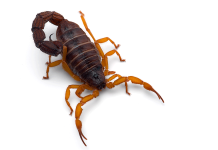Tick-borne diseases such as Lyme disease are on the rise. Lyme disease is an infectious disease caused by the bacteria Borrelia burgdorferi. B. burgdorferi is transmitted to humans by a bite from an infected black-legged or deer tick. The tick becomes infected after feeding on infected deer, birds, or mice.
A tick has to be present on the skin for at least 36 hours to transmit the infection. Many people with Lyme disease have no memory of a tick bite. People who live or spend time in wooded areas known for transmission of the disease are more likely to get this illness. People with domesticated animals that visit forested regions also have a higher risk of getting Lyme disease.
To contract Lyme disease, an infected deer tick must bite you. The bacteria enter your skin through the bite and eventually make their way into your bloodstream. In most cases, to transmit Lyme disease, a deer tick must be attached for 36 to 48 hours. If you find an attached tick that looks swollen, it may have fed long enough to transmit bacteria. Removing the tick as soon as possible might prevent infection.
Remove a tick as soon as possible with tweezers. Gently grasp the tick near its head or mouth. Don’t squeeze or crush the tick, but pull carefully and steadily. Once you’ve removed the entire tick, dispose of it by putting it in alcohol or flushing it down the toilet, and apply antiseptic to the bite area.
Although Lyme disease is commonly divided into three stages — early localized, early disseminated, and late disseminated — symptoms can overlap. Some people will also present in a later stage of disease without having signs of earlier disease.
A small, red bump, similar to that of a mosquito bite, often appears at the site of a tick bite or tick removal and resolves over a few days. This regular occurrence doesn’t indicate Lyme disease.
From three to 30 days after an infected tick bite, an expanding red area might appear that sometimes clears in the center, forming a bull’ s-eye pattern. The rash (erythema migrans) expands slowly over days and can spread to 12 inches (30 centimeters) across. It’s typically not itchy or painful but might feel warm to the touch.
Erythema migrans is one of the hallmarks of Lyme disease, although not everyone with Lyme disease develops the rash. Some people develop this rash at more than one place on their bodies.
Other symptoms may include fever, chills, fatigue, body aches, headache, neck stiffness, and swollen lymph nodes can accompany the rash.
The best way to prevent Lyme disease is to avoid areas where deer ticks live, primarily wooded, bushy areas with long grass. You can decrease your risk of getting Lyme disease with some simple precautions like when in a wooded or grassy areas, wear shoes, long pants tucked into your socks, a long-sleeved shirt, a hat, and gloves. Try to stick to trails and avoid walking through low bushes and long grass. Keep your dog on a leash.
Use insect repellents. Apply insect repellent with a 20 percent or higher concentration of DEET to your skin. Parents should apply repellant to their children, avoiding their hands, eyes, and mouth.
While everyone is susceptible to tick bites, campers, hikers, and people who work in gardens and other leafy outdoor venues are at the greatest risk of tick bites!
Until Next Time,
Team Doctor ASKY!





















